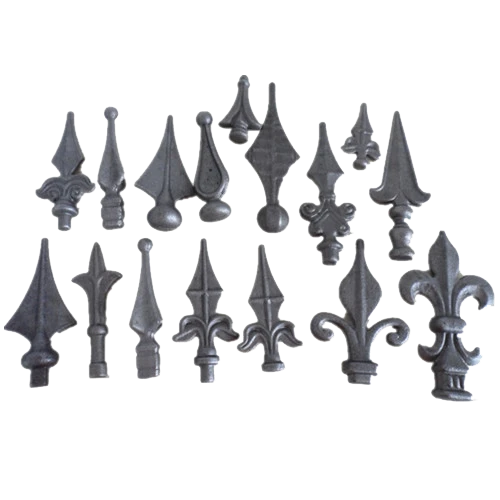Mobile:+86-311-808-126-83
Email:info@ydcastings.com
duplex steel casting
Understanding Duplex Steel Casting Properties, Applications, and Advantages
Duplex steel casting has emerged as a critical material choice in various industries due to its unique properties that combine the best features of both austenitic and ferritic stainless steels. With its growing popularity, it is crucial to explore what duplex steel is, its casting process, and the advantages it offers across different applications.
What is Duplex Steel?
Duplex stainless steel is known for its two-phase microstructure, which consists of roughly equal parts of austenite and ferrite. This balanced composition imparts remarkable mechanical properties, making duplex steel highly resistant to stress corrosion cracking, pitting, and chloride-induced corrosion. The most common grades of duplex steel include S31803 and S32205, which are recognized for their enhanced strength and durability, particularly in harsh environments.
The balance of austenite and ferrite gives duplex steel an impressive yield strength—up to twice that of conventional austenitic stainless steel. This characteristic is particularly beneficial in applications requiring high strength materials that can withstand heavy loads without deforming.
Casting Process of Duplex Steel
The casting of duplex steel involves several critical steps, ensuring the final product possesses the desired mechanical and metallurgical properties. First, high-quality raw materials are carefully selected and melted in an electric arc furnace or an induction furnace. This controlled melting process is essential to minimizing impurities and achieving a uniform chemical composition.
After melting, the molten duplex steel is cast into mold cavities to form the desired shapes. Common casting processes for duplex steel include investment casting and sand casting, each offering its unique benefits. Investment casting is prized for its ability to produce complex geometries with tight tolerances, making it ideal for intricate components. On the other hand, sand casting is more suited for larger components and offers a more economical production option.
Once the casting is complete, it undergoes various heat treatment processes, such as solution annealing, to enhance its mechanical properties and relieve any stresses induced during casting. This heat treatment process also helps achieve the desired microstructure essential for the performance of duplex steel.
duplex steel casting

Applications of Duplex Steel Casting
Duplex steel casting is utilized across a wide range of industries, including oil and gas, petrochemical, marine, and pulp and paper. One of its prominent applications is in the construction of pressure vessels, pipelines, and storage tanks, where its exceptional corrosion resistance is vital for long-term durability in hostile environments. In the oil and gas sector, duplex stainless steel is often used in subsea applications due to its ability to withstand high pressures and aggressive corrosive agents found in seawater.
Another significant application is in the marine industry, where duplex steel is used for components such as shafts, rudders, and propellers. The material’s combined strength and corrosion resistance are essential for enhancing the lifespan of marine equipment, reducing maintenance costs, and ensuring safety at sea.
Advantages of Duplex Steel Casting
The advantages of duplex steel casting are manifold. Firstly, its high strength-to-weight ratio allows for the design of more efficient and lighter structures, reducing material usage and associated costs. Secondly, duplex steel exhibits superior resistance to various forms of corrosion, including pitting and crevice corrosion, which are typical concerns in corrosive environments. This extended resistance translates into longer service life, lower maintenance requirements, and ultimately reduced operational costs.
Furthermore, the casting process of duplex steel allows for the production of complex shapes and internal structures that can be challenging to achieve with traditional forms of steel. This versatility can lead to innovative designs and applications across different industries.
Conclusion
In summary, duplex steel casting represents a significant advancement in materials engineering. Its unique blend of strength, corrosion resistance, and manufacturing versatility makes it an ideal choice for various challenging applications. As industries continue to seek durable and cost-effective materials, the role of duplex steel casting will undoubtedly become more prominent, paving the way for innovative solutions in engineering and manufacturing. Whether in the offshore oil fields or busy chemical plants, duplex steel continues to demonstrate its reliability and performance, solidifying its status as a critical material in the modern industrial landscape.
-
Why Should You Invest in Superior Pump Castings for Your Equipment?NewsJun.09,2025
-
Unlock Performance Potential with Stainless Impellers and Aluminum End CapsNewsJun.09,2025
-
Revolutionize Your Machinery with Superior Cast Iron and Aluminum ComponentsNewsJun.09,2025
-
Revolutionize Fluid Dynamics with Premium Pump ComponentsNewsJun.09,2025
-
Optimizing Industrial Systems with Essential Valve ComponentsNewsJun.09,2025
-
Elevate Grid Efficiency with High-Precision Power CastingsNewsJun.09,2025











